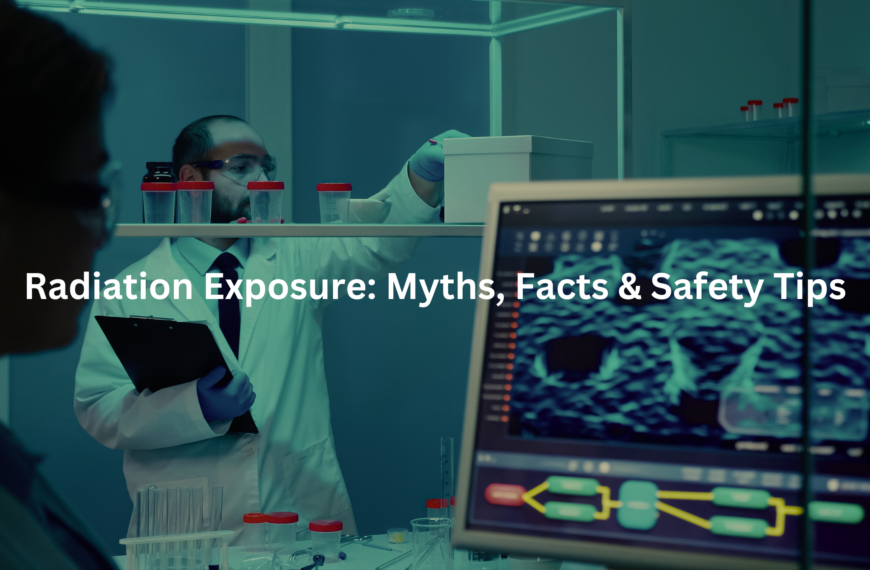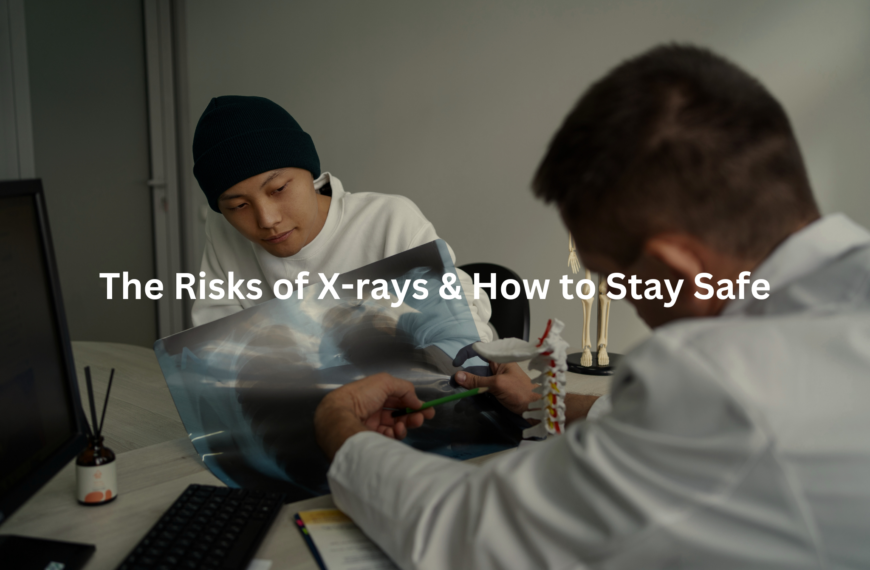Keeping children safe in medical imaging—what parents should know.
There’s something unsettling about seeing a child in a hospital gown. Maybe it’s the way it swallows their tiny frame or the way their fingers fidget with the fabric. It reminds everyone that hospitals, for all their necessity, aren’t places kids should have to be.
Imaging procedures add another layer of concern. The machines are massive, the lights bright, the beeping constant. But hospitals in Australia take extra steps to make sure children are safe, minimising radiation exposure while still capturing the images needed for diagnosis and treatment.
Key Takeaway
- Child safety in imaging focuses on minimizing risks while getting the best images.
- Special protocols help doctors ensure kids are safe during procedures.
- Communication and parental involvement are key to making children feel secure.
Pediatric Imaging Protocols
Pediatric imaging protocols exist to ensure that children receive medical imaging with the least risk possible. Imaging guidelines, particularly those outlined by the Royal Australian and New Zealand College of Radiologists (RANZCR), help radiologists determine the safest and most effective way to perform scans on younger patients.
Children’s bodies are different from adults. Their tissues absorb radiation more readily, and their organs are still developing. That means imaging protocols must be adjusted for age, weight, and medical necessity.
Key aspects of pediatric imaging protocols include:
- Age-based modifications: Infants, toddlers, and adolescents have different requirements. A six-month-old won’t hold still for an X-ray like a teenager might.
- Modality selection: Where possible, ultrasound and MRI (which use no ionising radiation) are prioritised over CT scans and X-rays.
- Radiation dose limits: Australian hospitals follow specific guidelines to keep radiation exposure low. These limits are set especially for children to minimise risks.
- Parental support: Parents are often encouraged to stay with their child during scans. Their presence helps keep the child calm and reduces movement, improving image quality.
Radiation Protection for Children
Radiation protection for pediatric patients follows a strict set of guidelines. Unlike adults, children’s bodies grow faster because their cells divide more often. This makes them more sensitive to radiation, which could increase the risk of health problems later in life. This is why dose adjustments are crucial. (1)
The ALARA principle is at the core of pediatric imaging. In practice, this means:
- Lowering radiation dose settings: Pediatric CT scans use protocols that reduce the dose by up to 80% compared to adult settings.
- Using alternative imaging first: Whenever possible, hospitals prioritise ultrasound or MRI.
- Limiting repeat exposures: Imaging should only be repeated if necessary.
- Shielding non-targeted areas: Lead aprons and thyroid collars are used when appropriate, though modern dose reduction techniques have made shielding less critical in some cases.
Pediatric X-ray Safety
X-rays are one of the most common imaging tests for children, especially for broken bones and lung infections. The goal is to get clear images while keeping radiation exposure as low as possible.
Hospitals use several safety measures:
- Digital X-ray technology: Uses less radiation than older film X-rays while producing sharper images.
- Proper positioning techniques: Helps get the right image the first time, reducing the need for repeat scans.
- Collimation: Focuses the X-ray beam only on the needed area, protecting nearby tissues.
- Technologist training: Radiographers receive special training to work with children, making the process quicker and more comfortable.
Dose Optimization in Children
Credit: Rad Tech Hub By Medical Professionals
Radiation dose in children isn’t a one-size-fits-all calculation. It needs to be precisely adjusted based on the child’s size, weight, and the specific clinical question being asked.
For CT scans, dose reduction strategies include:
- Automatic exposure control (AEC): Adjusts radiation output based on body size.
- Weight-based protocols: Ensures that smaller patients receive lower doses.
- Iterative reconstruction techniques: Uses advanced algorithms to improve image quality at lower doses.
For X-rays and fluoroscopy, similar principles apply. Adjustments to machine settings and careful selection of exposure times ensure minimal risk without compromising diagnostic accuracy.
Imaging Equipment Safety
Broken imaging equipment isn’t just a hassle—it can mean extra scans, more radiation, and even wrong diagnoses. That’s why hospitals follow strict maintenance protocols.
- Routine calibration: Ensures machines produce images at the lowest effective dose.
- Quality assurance programs: Regular testing to confirm imaging accuracy.
- Pediatric-specific equipment: Designed to accommodate smaller body sizes, reducing the need for manual adjustments that could lead to errors.
Pediatric CT Scan Guidelines
CT scans give clear, detailed pictures, but they use more radiation than regular X-rays. That’s why Australian hospitals follow strict rules for pediatric CT scans:
- Try other options first: If an MRI or ultrasound can provide the answers doctors need, they are used instead. These don’t involve radiation.
- Use the lowest radiation possible: CT scans are set to deliver the smallest dose needed to get a clear image.
- Scan only what’s necessary: To limit exposure, only the area that needs checking is scanned.
These steps help keep children safe while still getting the right medical information.
Fluoroscopy Safety Measures
Fluoroscopy offers real-time imaging, which is useful for procedures like barium swallows or catheter placements. But it requires longer exposure times, making radiation safety essential. (2)
Strategies include:
- Pulse fluoroscopy: Reduces radiation by only emitting X-rays in short bursts.
- Last-image-hold technology: Allows radiologists to analyse images without continuous exposure.
- Time monitoring: Limits total exposure time per procedure.
Shielding Techniques for Children
Shielding used to be the best way to protect patients from radiation, but with new technology and better ways to reduce dose, the focus has changed. But, in certain cases, shielding remains beneficial:
- Gonadal protection: Lead shielding is sometimes used to protect reproductive organs.
- Thyroid shielding: Applied in cases where the thyroid gland may be exposed unnecessarily.
- Breast shielding: For adolescent patients undergoing chest X-rays.
Sedation Considerations in Pediatric Imaging
Some imaging procedures require absolute stillness, which can be challenging for young children. That’s where sedation comes in.
- Minimal sedation: Used for children who need mild calming but can still respond.
- Moderate sedation: For longer procedures where cooperation is difficult.
- General anaesthesia: Reserved for cases where complete immobility is necessary, such as MRI scans lasting over an hour.
Anaesthesia teams carefully evaluate each case to ensure the safest sedation option is chosen.
Pediatric Radiology Standards
Radiology departments in Australia follow strict national accreditation rules to keep imaging safe and high quality. Doctors and radiographers keep learning, update their methods, and follow global standards to make sure pediatric imaging stays as safe as possible.
Every scan needs a clear reason. If an imaging test won’t help decide a child’s treatment, it shouldn’t be done. Radiologists work closely with referring doctors to check if a scan is necessary. They always aim for the lowest possible radiation dose while still getting clear images for an accurate diagnosis. (3)
Communication of Risks in Pediatric Imaging
Parents should get clear and honest information about the risks and benefits of medical imaging. Hospitals support open conversations so caregivers can ask questions and decide what’s best for their child.
Kids feel safer when their parents are nearby. Radiology teams often let parents stay in the room during scans that don’t use radiation, like ultrasounds or MRIs. For X-rays, parents can sometimes stay too—so long as they wear protective gear.
Ethical Considerations in Child Imaging
Ethics in paediatric imaging isn’t just about rules—it’s about safeguarding children from unnecessary risks. Every scan, every dose of radiation, must be justified. The guiding principle? Benefit must outweigh risk.
Medical professionals follow strict protocols to ensure imaging is necessary before exposing children to ionising radiation. Alternative methods—ultrasound or MRI—are prioritised when possible. When X-rays or CT scans are required, dose reduction strategies (like adjusting exposure settings for paediatric patients) are applied.
Informed consent is essential. Parents must understand the purpose, risks, and benefits of each scan. Radiologists and technicians play a key role in educating families, explaining procedures in simple terms. Communication builds trust and reduces fear.
Child imaging isn’t just about the science—it’s about ethics, responsibility, and ensuring the safest path forward.
Imaging Quality Assurance for Children
Quality assurance in paediatric imaging isn’t optional—it’s essential. Poor image quality means repeat scans, increasing radiation exposure. That’s unacceptable.
Hospitals use rigorous protocols to maintain imaging accuracy. Machines undergo routine calibration, and radiographers receive specialised training to optimise exposure settings for children’s smaller bodies. Digital radiography and dose monitoring tools ensure consistency.
Audits help maintain standards. Organisations like RANZCR provide guidelines to minimise risk and improve safety. If an image isn’t diagnostic, it shouldn’t be taken at all. The focus? Precision. Accuracy. And keeping children safe while getting the answers doctors need.
FAQ: Child Safety in Imaging
How can radiation exposure be minimized in pediatric imaging?
Minimising radiation exposure in children starts with following paediatric imaging protocols like the ALARA principle for paediatrics. This means using the lowest radiation dose possible while still getting clear images. Dose optimisation in children involves adjusting scan settings based on their age, weight, and medical needs.
Parents can ask if alternative imaging modalities for paediatrics, such as ultrasound or MRI, might work instead. These options don’t use radiation, making them a safer choice when suitable.
What safety measures are in place for pediatric CT scans?
Pediatric CT scan guidelines help protect children from too much radiation by using age-specific imaging protocols. Many hospitals track radiation exposure over time with dose tracking systems to keep it as low as possible.
Getting clear images while limiting radiation is a careful balance—radiologists adjust settings to avoid unnecessary exposure while still making sure the images are useful. Specialised pediatric imaging facilities often use advanced noise reduction strategies during scans. These help improve image quality without increasing radiation, making the process safer for children.
How are children kept still during imaging?
Pediatric patient positioning strategies and immobilization techniques for children help prevent blurry images and reduce the need for repeat scans. Sedation considerations in pediatric imaging are assessed carefully, with non-sedation options preferred when possible. Best practices for minimizing retakes include training for healthcare professionals in pediatric radiology and using digital imaging safety protocols to capture clear images the first time.
What are the risks of contrast media in pediatric imaging?
Contrast media safety in children is closely monitored to avoid allergic reactions or kidney issues. Pre-procedure screening for pediatric patients helps identify risk factors before administering contrast. Advances in imaging technology for children have improved contrast agents to make them safer. Parents should communicate any history of allergies or medical conditions to ensure proper precautions are taken.
How can parents be involved in imaging decisions?
Parental involvement in imaging decisions is encouraged. Radiologists should communicate the risks in pediatric imaging clearly, explaining why a scan is needed and any safety measures in place. Patient-centered care in radiology includes addressing concerns and discussing alternative options.
Community awareness on pediatric safety in imaging helps parents make informed choices. If unsure, parents can ask about risk-benefit analysis in child diagnostics to understand the necessity of a scan.
Conclusion
Keeping kids safe during medical imaging is a big focus for healthcare in Australia. With strict rules, better technology, and clear communication, doctors work hard to make imaging as safe as possible. Parents have an important role too. By working together, families and medical teams can make sure children get the care they need. In the end, protecting our little ones means taking extra care at every step of their medical journey.
References
- https://www.iaea.org/resources/rpop/health-professionals/radiology/children
- https://pubmed.ncbi.nlm.nih.gov/23550188/
- https://pubmed.ncbi.nlm.nih.gov/26219738/



